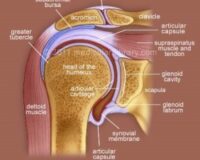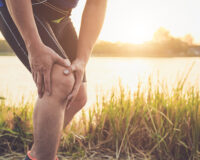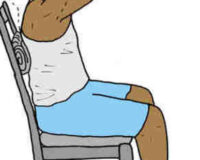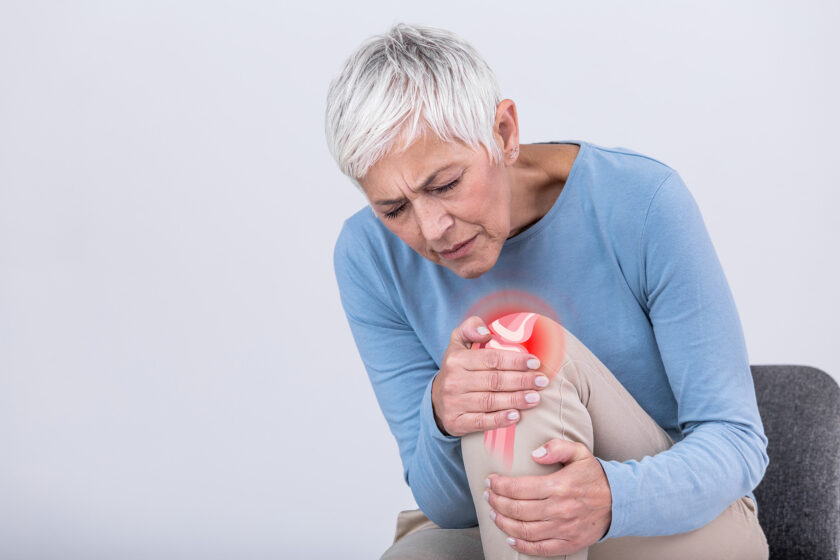
Are You Experiencing Knee Pain?
The team at Therapia Physiotherapy & Pilates is here to help!
There are many reasons why a person might be experiencing knee pain, including issues with the bones (Femur, Tibia & Patella), joints (where the bones meet, the opposing surfaces are covered in smooth cartilage), capsule (a fluid-filled sac surrounding the joint, it helps to lubricate the joint), ligaments (non-contractile tissues that support the joint), muscles/tendons (contractile tissues that move the joint), bursae (fluid-filled sacs between structures, they help to reduce friction) and/or nerves (information highways to/from the brain and spinal cord). Unlike other joints, the knee also has two menisci (shock absorbers between the femur & tibia). As such, it is important to identify the correct source(s) of the pain.
Correctly identifying the underlying reason(s) for and source(s) of symptoms enables the team of practitioners at Therapia Physiotherapy & Pilates to develop an individualised treatment program that will effectively manage your symptoms and promote long term recovery.
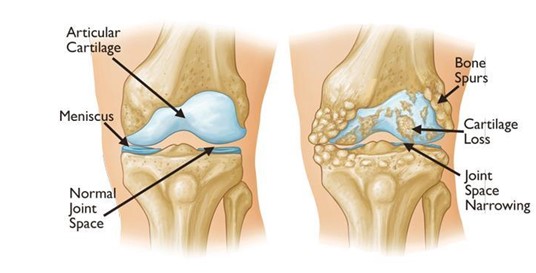
AAOS 1995-2021
A common cause of ongoing knee pain is osteoarthritis (OA). It is the most prevalent form of arthritis, affecting the quality of life for more than 1.8 million Australians. OA is a chronic, degenerative condition usually affecting the whole joint that develops over many months to years. It can occur in any joint of the body but often develops in the weight-bearing joints (e.g. hips & knees).
Knee OA is often associated with age (>40yrs), gender (women>men), history of being overweight, work history involving climbing, squatting and/or kneeling and/or history of previous severe knee injury.
What changes occur in a knee with OA?
- The smooth cartilage on the bones slowly wears away
- The protective space between the bones starts to decrease
- The bones come into direct contact
- The bones grow outwards, forming bone spurs
- The surrounding tissues become inflamed
- The ligaments and tendons deteriorate
What symptoms are associated with knee OA?
- Joint pain, stiffness and swelling
- Decreased range of movement
- Locking sensation and/or a sense of ‘giving away’
- Grinding noise or ‘crepitus’
- Difficulty getting in and out of bed, standing up from a chair, walking, climbing stairs, squatting, kneeling and/or lifting heaving loads
Pain usually onsets slowly and worsens over time. Initially, pain and stiffness are worse first thing in the morning and after rest. Pain may also flare up with vigorous activity. Later, pain and stiffness start to occur during rest and at night.
What will an initial physiotherapy assessment for knee OA involve?
- Collecting a detailed history of your presentation (e.g. What are your symptoms? How are they changing over time? What activities make them better vs. worse?)
- Observing your posture and movement patterns (e.g. sit-to-stand, walking, climbing stairs & squatting)
- Assessing your knee range of movement, muscle strength, joint play and articulating surfaces
- Testing your nervous system (if/when applicable)
What will physiotherapy treatment for knee OA involve?
At Therapia Physiotherapy & Pilates we treat knee OA using active rehabilitation, specifically we work to manage your pain and swelling whilst promoting range of movement, strength and endurance plus dynamic stability (how supported you feel during movements). We will look at your whole body too, not just your knee!
Pain and swelling management might involve pain education, remedial massage, dry needling, taping, bracing, compression, gait aid prescription, activity modification, ice/heat packs, anti-inflammatory creams and/or taking supplements (e.g. Omega-3).
Range of movement, strength and endurance plus dynamic stability are promoted through a combination of individualised studio-based clinical Pilates and home exercises. Your exercise program will be developed in collaboration with you and reflect your personal goals plus the most up-to-date research evidence (e.g. GLA:D). We want to help you to minimise your symptoms, increase your function and improve your wellbeing!
All active rehabilitation is conducted in consultation with your GP and any other healthcare providers (e.g. Rheumatologist & Podiatrist).
Why active rehabilitation and exercise are helpful and not harmful in OA!
Multiple researches have shown that:
• It takes a lot to damage the muscles and joints
• Excessive inactivity is worse than minimal activity
• You do not get more osteoarthritis by being physically active

Benefits of Exercising with osteoarthritis!
• Improves joint stability
• Improves range of motion and function
• The knee cartilage needs appropriate load in order for its quality to improve
• Reduces pain
Overall active exercises and movement is better for synovial circulation in the knee joint and is needed for recovery.
What is GLA:D?
GLA:D (Good Life with osteoArthritis Denmark) is an education and exercise program developed by researchers in Denmark for people living with OA of the hip(s) and/or knee(s). Australian research has shown that participation in the GLA:D program results in decreased pain, pain medication use and perceived need for surgery plus increased joint confidence (GLA:D Australia 2017). Our team at Therapia Physiotherapy & Pilates includes GLA:D certified practitioners. As such, your active rehabilitation program will reflect GLA:D principles.
GLA:D exercises for people living with knee OA include various exercises. Some of these examples are: backwards and sideways lunges, knee flexion and extension, sit-to-stand practice plus step-ups.






GLA:D Australia 2019
Additional, complementary clinical pilates exercises to help with strengthening of knees might include: Foot Strap work (hamstring arcs & circles), Scooter, Russian splits and Step-ups.



At Therapia, we love helping people with knee pain and OA to achieve their personal goals whether it is to stay active, go for long walks or return to sports. Most of our clients achieve their goals through a rehab program that includes individualised treatment and exercise programs incorporating GLA:D exercises, Pilates, Yoga, etc.
If you notice any knee pain that is not improving and is affecting your daily function and hobbies, please contact your physiotherapist at Therapia Physiotherapy and Pilates on 8221 5011, or email us at info@therapia.com.au.
Book an appointment to consult a physio via:
We look forward to answering any questions you have, and discuss treatment options with you.
Disclaimer!
None of the information in this article is a replacement for proper medical advice. Always see a medical professional for advice on your individual injury.
If you have experienced or are experiencing any injuries, chronic tightness or pain in the knees or hips, it is recommended that you seek the advice of your trusted health advisor (GP, physio, or us!) before you attempt any exercises.
References:
- American Academy of Orthopaedic Surgeons (AAOS) 1995-2021, Osteoarthritis of the Knee, OrthoInfo, viewed 20 February 2021, <https://orthoinfo.aaos.org/en/diseases–conditions/arthritis-of-the-knee/>.
- Arthritis Australia 2009, Taking control of your Osteoarthritis – A practical guide to treatments, services and lifestyle choices, Glebe, New South Wales, Australia.
- GLA:D Australia 2017, Welcome to GLA:D Australia, GLA:D Australia, viewed 22 March 2021, <https://gladaustralia.com.au/>.
- GLA:D Australia 2019, GLAD NeMEx Program 2019, GLA:D Australia, Melbourne, Victoria.

